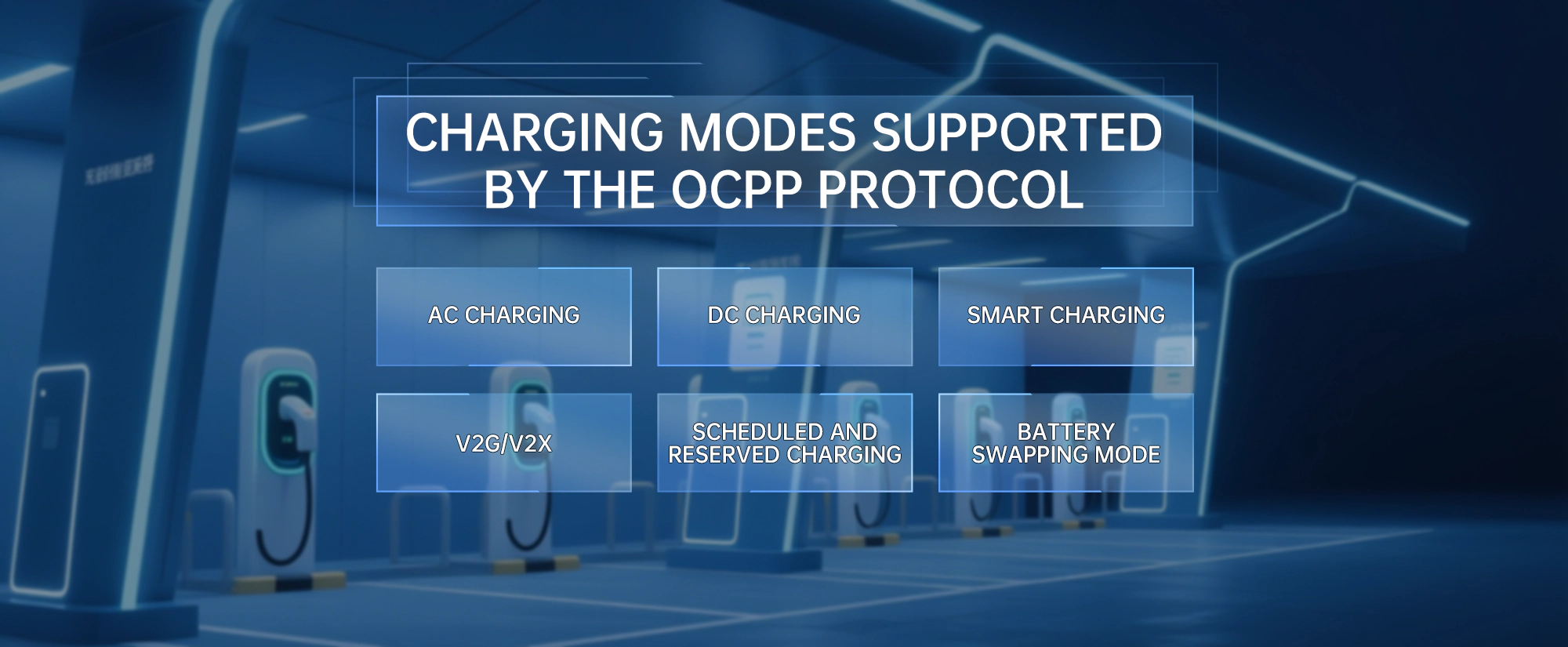
Charging Modes Supported by the OCPP Protocol
The Open Charge Point Protocol (OCPP) is an open communication standard widely used for communication between electric vehicle (EV) charging stations and backend management systems. With continuous version updates, OCPP supports multiple charging modes to meet the needs of various scenarios. Below is a detailed introduction:

▶ 1. AC Charging
AC charging is the most common charging mode, suitable for slow-charging scenarios such as residential or public parking lots.
- Features: Power typically ranges from 7kW to 22kW.
- Functionality Support: OCPP can manage the start, stop, billing, and remote monitoring of AC charging stations.
- Applicable Scenarios: Long-term parking or nighttime off-peak usage.
▶ 2. DC Fast Charging
DC fast charging provides higher power output for quickly replenishing vehicle energy.
- Features: Power typically ranges from 50kW to 300kW.
- Functionality Support: OCPP supports real-time data transmission, dynamic load management, and transaction processing to optimize the fast-charging process.
- Applicable Scenarios: Highway service areas, urban fast-charging stations, or locations where quick charging is essential.
▶ 3. Smart Charging
Smart charging dynamically adjusts power and timing to optimize energy usage.
Features:
- Adjusts charging power based on user demand or grid load.
- Supports load balancing and uses “charging profiles” for precise control.
Functionality Support: OCPP allows backend systems to send “SetChargingProfile” commands to define power limits and time ranges for intelligent energy management.
Applicable Scenarios: Commercial operating sites or areas with tight energy supply.
▶ 4. Bidirectional Charging (V2G/V2X)
Bidirectional charging enables energy transfer between vehicles and the grid or other devices.
Features:
- Supports Vehicle-to-Grid (V2G) or Vehicle-to-Everything (V2X) energy feedback functionality.
- Complies with ISO 15118 standards to enable bidirectional energy flow.
Functionality Support: The latest OCPP 2.1 version enhances support for bidirectional charging, allowing EVs to act as distributed energy resources in energy management.
Applicable Scenarios: Smart energy networks and distributed generation systems.
▶ 5. Scheduled and Reserved Charging
Users can plan their charging times in advance or reserve a charging station.
Features: Allows users to set scheduled tasks or reserve specific chargers via mobile apps.
FFunctionality Support: OCPP can process reservation requests, ensure resource allocation, and provide notification mechanisms to update users on status changes.
Applicable Scenarios: Residential users or shared parking lots.
▶ 6. Battery Swapping Mode
The latest OCPP versions have begun supporting battery swapping station functionality, particularly for two-wheelers, three-wheelers, and some commercial vehicles.
Features: Directly replaces a fully charged battery without waiting for traditional charging processes.
Functionality Support: OCPP can integrate such facilities and handle transaction processing.
Applicable Scenarios: Logistics hubs or electric motorcycle service stations.
▶ Conclusion
Through its openness and scalability, the OCPP protocol provides robust technical support for various charging modes. From basic AC slow charging to advanced bidirectional energy flow, it meets the needs of different user groups and application scenarios. As smart technologies continue to evolve, OCPP will further drive efficient, secure, and sustainable energy management solutions.